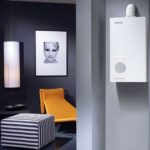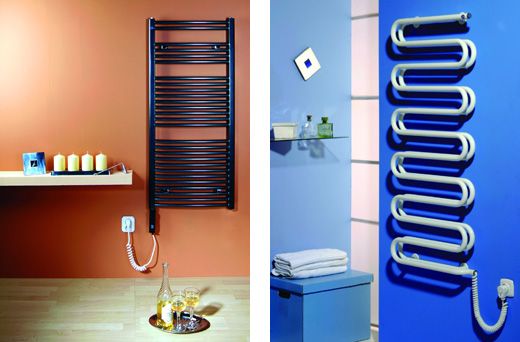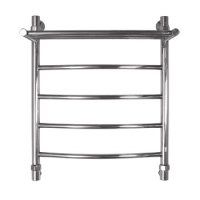How much does an electric heated towel rail consume?
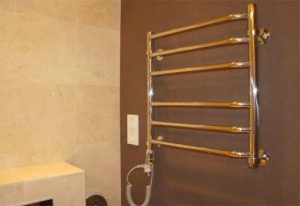 A heated towel rail is a device that not only provides comfort, allowing you to conveniently place and quickly dry towels and underwear. It is also an important sanitary device: it prevents the development of fungus on the fabric. Therefore, the importance of a heated design cannot be overestimated. It remains to find out its energy consumption.
A heated towel rail is a device that not only provides comfort, allowing you to conveniently place and quickly dry towels and underwear. It is also an important sanitary device: it prevents the development of fungus on the fabric. Therefore, the importance of a heated design cannot be overestimated. It remains to find out its energy consumption.
The content of the article
How much electricity does an electric heated towel rail consume?
The range of electricity consumption is quite wide. This is explained both by the variety of bathrooms and, presumably, the number of their visitors, and by the standard size of the devices themselves.
What affects energy consumption
- The main factor, first of all, is the engineering and technical layout, what type of electric dryers are:
- Liquid. All models are quite powerful: from 1000 to 300 W. The main component ensuring the transportation and storage of heat is oil or water. And it consumes electricity and produces heating - heating element. It is turned on and off using sensors. In the simplest version - when the maximum and minimum temperature limits are reached. The main current consumption occurs during the initial heating period, and then the heating element only maintains the specified mode.
- Cable.Refers to medium and small devices: from 30 to 165 W. Heating is carried out using a special cable. These devices are less power-hungry, but their heat dissipation is significantly less. If the task is only to dry, but not to heat the room, these models can be a very reasonable and balanced solution.
- Combined. Combines the advantages of the two previous types. They have a significant drawback - they are significantly more expensive.
- Additionally, within the model range, the heat transfer characteristics come to the fore (the higher it is, the more voracious the device, as a rule). Moreover, the presence of a thermostat and/or timer provides significant savings. A heated towel rail whose heating element is on all the time will consume electricity much more intensively than one that turns on on a timer from time to time. And a device capable of operating only at one temperature will be inferior in energy efficiency to a flexible device with a thermostat.
- Cable heated towel rails should not be used for heating, as they have insignificant power characteristics, a high energy consumption coefficient and are intended only for drying.

Energy consumption factor
This parameter is not indicated in the heated towel rail passport, mainly because it depends on many nuances. And it expresses the ratio of the total heating and drying time to the time of active heating with current consumption and is close to the concept of efficiency. The better the design retains heat, and the longer it releases it into the surrounding space, and the less electricity it consumes, the lower the coefficient.
For electric heated towel rails, this figure ranges from 0.4 (the most common option and corresponds to 24 minutes of consumption) to 0.16 (the most energy-saving - only 10 minutes). Moreover, it depends not only on the design features of the device, but also on how wet the laundry is and how much of it is dried. And taking into account the related task of heating - how proportional is its power to the air exchange of the room ventilation system (for a bathroom - 25 m³, for a combined bathroom - 50 m³), as well as humidity and the amount of laundry being dried.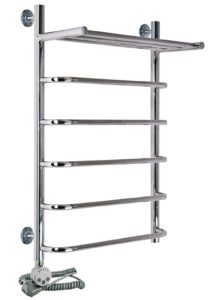
Electricity consumption calculation
It is not difficult to calculate the monthly energy consumption of a heated towel rail if its power is known. As a last resort, you can look at his passport, where the required number will be indicated.
Important! The formula for calculations is simple: the power of the device must be multiplied by the number of hours of its operation in one day and by 30 - the average number of days in a month.
For example, a household appliance with a power of 100 W, operating 5 hours a day, is calculated as follows:
50 W x 5 hours x 30 = 7500 W/h
These are approximate calculations. They are based on the assumption that the temperature in the apartment is not lower than 20˚C, and the volume of the room is chosen to be a certain average volume.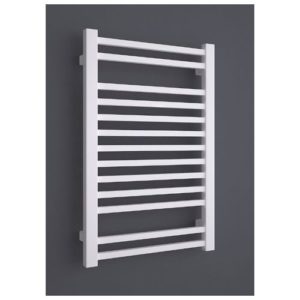
There is also a more strict technical formula that takes into account almost all factors by including an additional factor - the energy consumption coefficient. The easiest way to find out this parameter is experimentally (by experimenting with an existing device): from the difference in the energy consumption of an apartment for the same period of time, with a working and non-working heated towel rail. The result will be the energy consumption for the test number of hours.
Finally, I would like to note some nuances that may be useful when choosing a suitable model.
For an ordinary and most common bathroom with an area of 3 m³ - 5 m³, a 30-40 W dryer is completely sufficient.
Cable heated towel rails rarely have a thermostat in their device; this is the prerogative of liquid devices.
For a small family, rotating devices are ideal. Their shelves are small and rotate 180 degrees in the horizontal plane.
An electric heated towel rail is a profitable and useful purchase. It is durable (average service life is about 30 years), helps reduce dampness in the room, makes hygiene procedures not only pleasant, but also protects the fabric from mold and mildew. I hope that the article was useful. Especially for those who are planning to purchase this unit in the near future.


